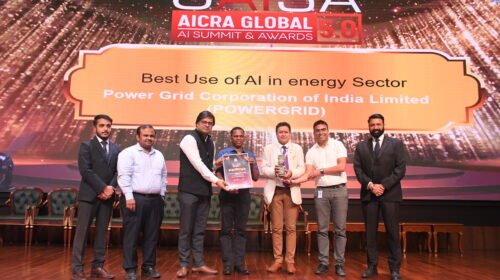- AI has already contributed to many known achievements in the field of space exploration
- Scientists to develop AI-powered robots to assist astronauts.
- NASA has already used innovative AI systems in different projects
Space exploration has always been a topic of interest to everyone since it carries the keys to many universal secrets. Researchers and scientists believe the universe is far beyond the visibility of any telescope ever made. The universe is much deeper than that.
Most of the universe is still left unexplored, and the facts we knew about it are only an introduction to the hidden wonder. Artificial intelligence simulates human intelligence in machines and has a crucial role in space science and research. These two massive terms AI & Space exploration, together can achieve the impossible.
So far, AI has contributed to many known achievements in the field of space research. CHIRP Algorithms- The sole reason behind the first-ever image of a black hole, was developed by a group of researchers from MIT with the help of artificial intelligence. The CHIRP used image data from the Event Horizon Telescopes and went through AI-empowered image processing to scale down the data, data correlation, and calibrations. Scientists are working on more complex algorithms to acquire more precise images of a black hole using Ai & machine learning.
AI-Based Assistants and Robots, yes…! you read it right. Soon astronauts will be getting assistance from AI-powered robots since scientists are on the verge of making one. These robots will be used to predict the crew requirements and appreciate astronauts’ emotions and mental health to take necessary actions in case of an emergency. For this purpose, researchers will use the opinion mining subfield of natural language processing that tries to extract opinions from given notes.
No article about space exploration can go without mentioning NASA in it. In 2018, NASA along with Intel developed a navigation system that helped Astronauts find the shortest way possible on the planets. The Navigation system was implemented in the mission to the moon and became a huge success. Later, these algorithms were applied to the Mars exploration program.
Nasa has always shown a keen interest in Artificial intelligence. The use of a Convolutional Neural Network named AstroNet K2 trained by AI is an example. It helped NASA to determine whether the signals coming from Kepler’s space telescope are a transiting exoplanet or a false positive caused by the astrophysical or instrumental phenomenon. With this, NASA identified two new exoplanets Kepler 80g and Kepler 90i orbiting the Kepler 80-star system and Kepler 90-star system respectively.
Finally, did you ever think of satellites that are forever remained in space? These are space junk or space debris. Back in 2013, space debris was identified as a problem without a solution after NASA released an image that revealed more than 23,000 human-made fragments in space and more than 500,000 small particles. To overcome the problem, scientists are combining deep learning techniques and backpropagation neural network models for pinpointing the location of the debris.
All Inclusive
There are movies like interstellar that depict the story of space exploration in the future. The stunning development rate of AI & its techniques gives us hope that the future of space exploration will be more advanced than what we have seen on the silver screen. AI is coming closer to providing newer insights into exploring space with innovative machines, projects, and research.
—————————————————————————————————————————————————————-
Global Artificial Intelligence Summit & Awards
If you or your organization is building cutting-edge AI solutions to adapt to a world driven by technology, Please nominate yourself/or your company for GAISA AWARDS 2022.
Please follow the below-given link to nominate:https://gaisa.in/award
All further details regarding the event will be updated on the official website of Gaisa 2022. Please Visit: https://gaisa.in/





